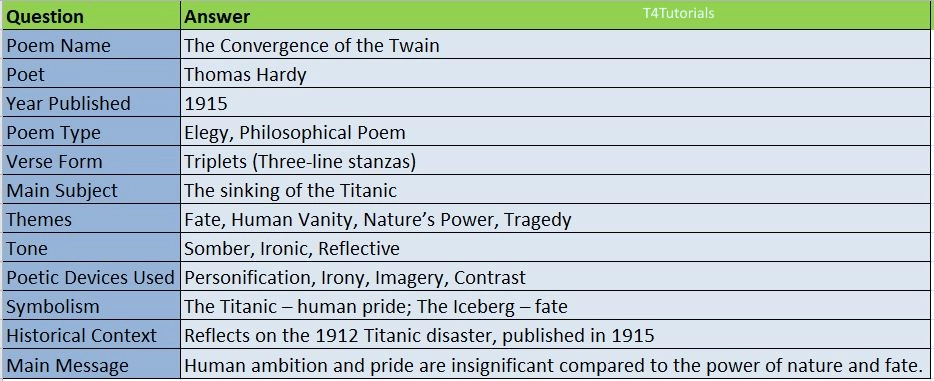Summary:
Thomas Hardy’s The Convergence of the Twain is a reflective and ironic poem about the sinking of the Titanic in 1912. The poem contrasts human vanity and materialism with the power of fate and nature. Hardy describes the ship, once a symbol of human achievement, now lying at the bottom of the ocean, abandoned and useless. He presents the iceberg and the Titanic as two forces destined to meet, emphasizing the idea of fate and inevitability. The poem critiques human pride and highlights the insignificance of human accomplishments in the face of natural forces. Hardy’s tone is somber and ironic, reinforcing the tragic nature of the disaster.
10
Score: 0
Attempted: 0/10
Subscribe
| Question | Answer |
| Poem Name | The Convergence of the Twain |
| Poet | Thomas Hardy |
| Year Published | 1915 |
| Poem Type | Elegy, Philosophical Poem |
| Verse Form | Triplets (Three-line stanzas) |
| Main Subject | The sinking of the Titanic |
| Themes | Fate, Human Vanity, Nature’s Power, Tragedy |
| Tone | Somber, Ironic, Reflective |
| Poetic Devices Used | Personification, Irony, Imagery, Contrast |
| Symbolism | The Titanic – human pride; The Iceberg – fate |
| Historical Context | Reflects on the 1912 Titanic disaster, published in 1915 |
| Main Message | Human ambition and pride are insignificant compared to the power of nature and fate. |